A Tunísia localiza-se no extremo norte da África, praticamente "encravada"entre a Argélia e a Líbia.
Quem vai à Tunísia recebe muito mais aventura do que imagina. O país é compacto e concentra muitos atrativos numa área equivalente à metade do Estado de São Paulo. Para começar, está cheio de lugares históricos fenícios, romanos, bizantinos, árabes e outros menos votados, porque sempre foi uma das encruzilhadas comerciais do mundo.
A Tunísia também dá praia, e praias de areia fina, banhadas pelo azul do Mediterrâneo, cheias de resorts chiques e européias de topless. Lá você entra em contato com o exotismo do mundo árabe, e como se não bastasse, ainda pode explorar o deserto do Saara e seus mistérios.
O povo tunisiano é resultado, em grande parte, da mistura dos elementos árabe e berbere com outros povos mediterrâneos que se fixaram no litoral do país. O idioma oficial da Tunísia é o árabe, mas falam-se também línguas berberes e o francês. A religião do estado é a muçulmana, professada por quase toda a população.
A agricultura emprega um quarto da população ativa. Apesar do impulso dado à irrigação, a lavoura seca continua a ser a base da produção agrícola. Os cereais (milho, trigo e cevada) são os principais cultivos de subsistência. A lavoura comercial inclui oliva, beterraba, frutas cítricas e hortaliças. A criação de gado ovino, caprino e bovino não é suficiente para atender às necessidades da população.
O petróleo desempenha um importante papel na economia tunisiana, embora os depósitos existentes sejam menores do que os dos países vizinhos. Até a descoberta de petróleo, em 1964, o fosfato era o principal recurso mineral do país, que exporta um terço de todo o fosfato que produz. O restante é empregado pelas indústrias químicas locais, que também exportam fertilizantes.
A Tunísia tem 3000 anos de forte presença na história do mundo, e os povos que por alí passaram, deixaram marcas. Os fenícios vinham dali.
Os cartagineses, também, e principalmente há ruínas romanas por toda parte. Uma das primeiras que se vêem são as termas de Antonino, um sítio histórico bem conservado, ao lado do palácio presidencial de Túnis. Outro ponto obrigatório é Sbeitla, com restos romanos impressionantes, como o Arco de Diocleciano, ao lado de ruínas bizantinas e árabes.
Fonte: www.happydayturismo.com.br
Tunísia
A Tunísia, ou República Tunisina, é um país do Norte de África, da região do Magreb. Faz fronteira com a Líbia, a Este e Sueste, com a Argélia a Oeste e Sudoeste, e com o Mar Mediterrâneo a Norte. A Tunísia é um país que, na última década, deu uma volta na sua economia, tendo actualmente no turismo uma importante fonte de receitas. O árabe e o francês são as línguas oficiais da Tunisia.
O nome oficial do país é República Tunisina e a sua capital é Tunes. É o mais pequeno país do Magreb, com uma população que ronda os 10 milhões de habitantes, que se distribuem, na sua maior parte, pelos 40% da superfície do país que não se encontra ocupada pelo Deserto do Sahara. A sua economia gira em torno do turismo, sem nos esquecermos da sua agricultura, da sua indústria mineira, da sua indústria de manufacturas várias e do petróleo.
Deve ser referido que, ao contrário dos seus vizinhos, como a Líbia ou a Argélia, a Tunísia é um país liberal no que diz respeito à aplicação das Leis do Islão, com uma tendência ocidental implantada nos seus costumes desde há já vários anos. Este facto torna possível a atracção de turistas. Por exemplo, a Tunísia é um país que permite que a mulher escolha o seu marido, algo comum e corrente no Ocidente, mas com um significado diferente se estivermos a falar do Magreb e de um país muçulmano. Esta e outras permissões fazem com que a aplicação das Leis do Islão seja um acto de fé religiosa e não uma imposição radical.
A Tunísia é um país que, todos os anos, atrai milhares de turistas de diversas naturezas e que têm muitos lugares onde ir e numerosas coisas para fazer. Existe, pois um turismo cultural, que quer aprender mais acerca da história deste país milenar, da sua cultura, das civilizações que por aqui passaram, e que querem saber mais acerca dos seus monumentos. A Tunísia é um país que atrai também turistas que procuram as suas praias, que querem aproveitar o seu sol, o seu relax, e que atrai ainda um turismo de desportos...
Para além disso, há que referir que a Tunísia é um país que oferece uma vasta gama de serviços, hotéis, hospedarias, restaurantes, alojamento em vivendas, apartamentos... centenas de coisas para fazer e para ver... Este país surpreende qualquer pessoa.
Natureza da Tunísia
A Tunísia é um país situado no Norte de África, sendo a sua Natureza muito condicionada pelo Deserto do Sahara, que ocupa cerca de 40% do seu território. É por essa razão que a paisagem da Tunísia é um tanto desértica e seca.
Cerca de 40% do território da Tunísia encontra-se coberto pelo Deserto do Sahara, o que dá uma ideia acerca de como são os espaços naturais deste país. No entanto, devemos referir que, na parte Sul, na zona mais desértica, encontramos vegetação, tal como pinhais e prados, onde o gado encontra o seu pasto, bem como hortas e vinhedos, na zona oriental da costa. Neste país, cerca de 19% da terra é cultivável.
No que se refere à sua orografia, devemos destacar o Monte Jebel Chamba, com 1560 metros de altitude, que é o mais elevado do país. É um monte onde abundam os pinheiros.
Por outro lado, não devemos esquecer a beleza da sua linha de costa. Na Tunísia, encontramos mais de 1000 km de litoral, em contacto com o Mar Mediterrâneo, com pequenas ilhas paradisíacas, que quase unem o país à Itália, país que se encontra a apenas 130 km de distância.
Relativamente à sua fauna, infelizmente, os elefantes e os leões desapareceram, e os franceses acabaram com os cervos, bem como as gazelas que aqui existiam. A fauna deste país encontra-se concentrada nos seus bosques, sendo constituída por javalis, mangustos, cabras selvagens, aves como avestruzes, antílopes, espécies que, na sua maioria, vivem em paz no Parque Nacional de Bou Hedma.
Para além disso, no deserto podem ser encontrados vários tipos de serpentes, escorpiões... Por outro lado, encontramos também numerosas aves aquáticas no Parque Nacional de Ichkeul, uma área protegida próxima da cidade de Tunes, onde encontramos diversas espécies de aves aquáticas, bem como aves migratórias.
Por último, da Natureza da Tunísia, devemos destacar que o mais importante rio deste país é o Rio Medjerda, enquanto que entre os lagos importantes do país não devemos esquecer o Lago Djerid e o Lago Bizerta.
Devemos ainda destacar, pela sua beleza natural, o Arquipélago das Kerkennas, situado em frente à costa de Sfax, a segunda mais importmante e maior cidade da Tunísia.
História da Tunísia
A Tunísia é um país milenar, é o país no qual floresceu Cartago, bastião da civilização cartaginesa, fundada no século VIII a.C.. É um país com muita história, que foi crescendo, vendo por aqui passar os Romanos, os Árabes, os Bereberes... antes de ver passar os Vândalos...
Cartago foi a primeira cidade conhecida nesta zona, uma cidade fundada no século VIII antes de Cristo, cuja influência se estendeu pelo Sul da actual Itália e pela Península Ibérica, retirando à Grécia o seu protagonismo nestas zonas. O Império Romano conquistou-a no século II a.C., tendo a cidade de Cartago sido destruída nessa altura.
A Tunísia passou então a ser uma província romana do Norte de África. Depois, foram os Vândalos que ocuparam a região. No século VI, foi a vez dos Bizantinos, e, depois, os Árabes retomaram o poder da região. A cidade de Kairuán foi fundada nesta época. A partir do século XII, a história da Tunísia esteve ligada aos Almohades, que detinham o controlo da zona, embora tenham sido expulsos dois séculos mais tarde.
A Espanha, o Império Otomano, uns Turcos denominados Beys, a França, que já no século XIX fez da Tunísia um protectorado... toda esta sequência de povos foi dominando a Tunísia até ao século XX, altura em que, durante a Segunda Guerra Mundial esta região era uma colónia francesa no Norte de África. Em 1956, a Tunísia tornou-se, finalmente independente.
Ao contrário de outros países do Magreb, como a Líbia, em finais do século XX e princípios do século XXI, a Tunísia começou um processo de abertura para o exterior, abertura em relação ao Ocidente, assinando acordos comerciais com a Europa, e aumentando e vigiando o respeito pelas liberdades públicas.
Actualmente, a Tunísia é um dos países mais abertos e ocidentalizados do Norte de África, motivo pelo qual é também um dos países mais turísticos e mais visitados por ocidentais.
Praias da Tunísia
A Tunísia é um dos países do Norte de África que possui um dos mais inacreditáveis litorais, com umas praias de areia dourada que deixam qualquer pessoa estarrecida. Trata-se de um lugar de águas cristalinas, cujas praias, se encontram, no Norte, rodeadas de montanhas e vegetação, dando-lhe um tom mais acolhedor que no Sul, onde o encanto se encontra no carácter desértico da região envolvente, no Arquipélago das Kerkennas e na Ilha de Djerba.
No geral, as praias da Tunísia são praias de areia branca e dourada, banhadas pelo Mar Mediterrâneo, com as suas águas cristalinas e quentes, com maravilhosos cantinhos onde pode mergulhar, onde pode nadar ou simplesmente dar um mergulho. Lugares como Tabarka, Djerba, Túnez capital, Sfax, Bizerta... são ideias para gozar as suas férias na Tunísia, seja com o seu par, em família ou sem mais ninguém... A Tunísia tem mais de 1000 km de costa, com águas transparentes e vai encontrar mais de 100 km de praia com infra-estruturas para que goze ao máximo.
Praias de Hammamet
Hammamet é um complexo turístico que se encontra a uma hora de Tunes, que tem grandes perspectivas de desenvolvimento, apoiadas pelas infra-estruturas que estão a ser construídas perto das suas praias. Estas infra-estruturas incluem hotéis e apartamentos, bem como restaurantes, lojas, etc. ...
Na Tunísia, a temperatura da água é óptima para tomar um banho, durante todo o ano, excepto, esporadicamente, em alguns dias de Inverno. As praias de Hammamet são praias de areia dourada e branca, limpas, com variados serviços e equipamentos nas zonas hoteleiras.
Nas águas das praias de Hammamet podem ser praticadas diversas actividades, tais como o mergulho ou a natação.
Praias da Ilha de Djerba
A Ilha de Djerba encontra-se situada na parte Este da Tunísia e a sua maior oferta turística é a que se relaciona com apanhar sol e aproveitar a praia, embora esta ilha conte igualmente com outros atractivos.
Djerba é uma ilha rodeada de praias de areia branca, de águas quentes e cristalinas, de lugares espantosos para quem gosta de mergulhar. Na Ilha de Djerba, vai encontrar praias bastante concorridas, com todo o tipo de serviços e equipamentos no interior das zonas hoteleiras, e praias isoladas, com outro tipo de encanto para as suas férias na Tunísia.
As praias mais importantes de Djerba são as de Sidi Mahrez e de Rass Taguerness e a Praia de Seguia.
Praias de Monastir
Monastir é uma cidade com muita história e as suas praias são um dos seus principais reclames turísticos, juntamente com os seus monumentos. Praias com águas cristalinas, de um azul intenso, areia dourada e branca, e bem equipadas. De Monastir, destaca-se ainda o seu passeio marítimo.
Praias de Melloula
A zona de Melloula encontra-se a Oeste de Tabarka, junto à fronteira com a Argélia. Trata-se de uma cidade tunisina onde vamos encontrar várias praias de todos os tipos, entre os quais, praias de areia branca, praias rochosas...
Entre as praias de Melloula, destacamos a Praia de Berkoukech, a Praia de Jebara, a Praia de Sidi Mechrig e a isolada Praia de Serrat, uma extensa praias de areia dourada, com mais de 7 km de extensão. É uma autêntica jóia do litoral da Tunísia.
Praias de Tunes
Na região de Tunes, são várias as praias que vamos encontrar. São, no geral, praias urbanas, situadas em lugares onde cresceram grandes complexos hoteleiros. As praias de Tunes são praias de areia dourada, com bons e variados equipamentos e muito concorridas.
Destacamos as praias de El Raouad, de Marsa, de Amilcar e de La Goulette. Devemos ainda referir a Praia de Pedruchillo, uma praia tunisina de elevado valor ecológico.
Praias de Sfax
Sfax é a segunda mais importante cidade do país. Nos seus arredores, nos seus domínios, encontramos praias tão imponentes e importantes como as praias de Laouza, de Sidi Mahrez Mansour, de Kerkennah e de
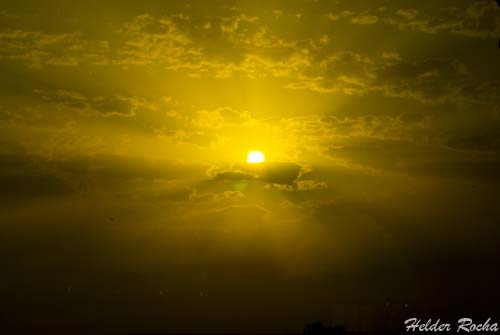 Nascer do sol no sítio das corridas
Nascer do sol no sítio das corridas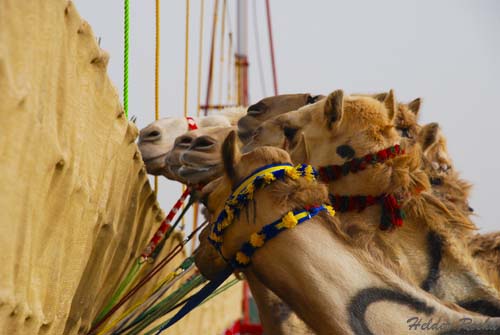 Segundos antes da partida
Segundos antes da partida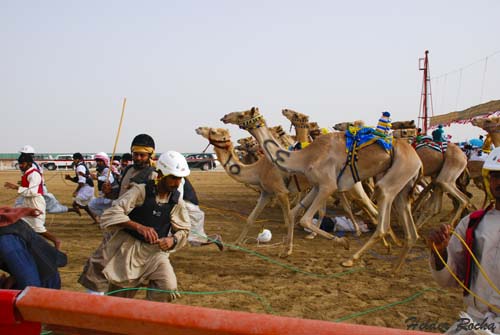 A partida, onde alguns dos “paquerós” ficavam por baixo dos camelos
A partida, onde alguns dos “paquerós” ficavam por baixo dos camelos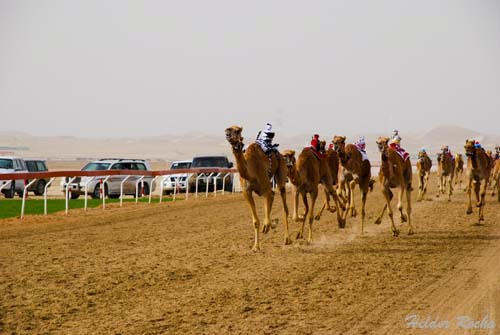 A corrida
A corrida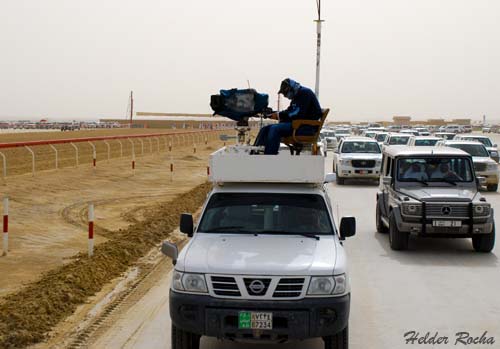 uma das câmaras da prova
uma das câmaras da prova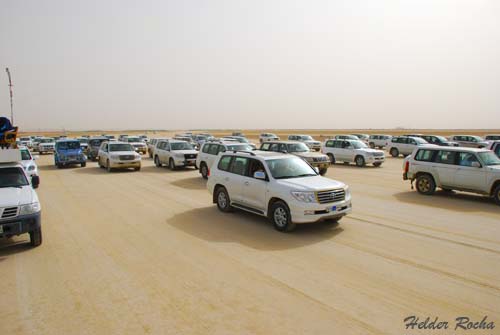 alguns dos muitos jipes que acompanham a prova a toda a hora
alguns dos muitos jipes que acompanham a prova a toda a hora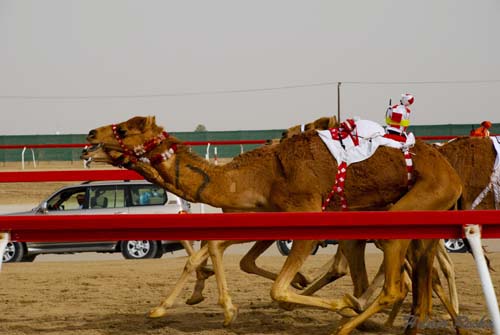 Frente de corrida com o núm. 16 na frente
Frente de corrida com o núm. 16 na frente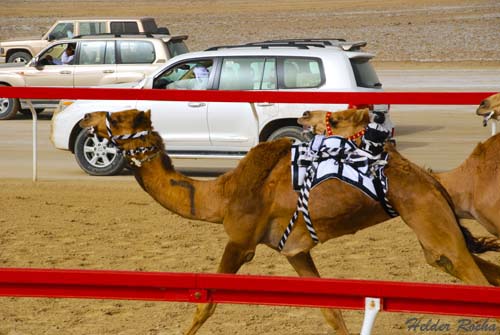 6 na frente com o bonequinho a açoitar
6 na frente com o bonequinho a açoitar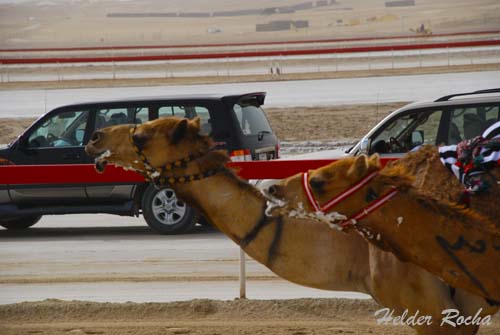 8 na frente e seguido pelo 3 com a verdadeira “baba de camelo”, alguém quer um pouco?
8 na frente e seguido pelo 3 com a verdadeira “baba de camelo”, alguém quer um pouco?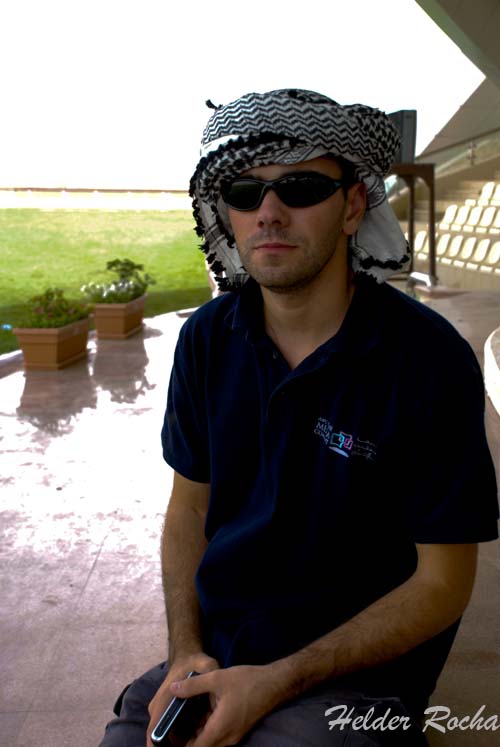 Eu na pausa de almoço.
Eu na pausa de almoço.






 Do calor do deserto , além de tudo, derivam estórias e personagens que ajudaram a criar no país a aura de um lugar mágico e reino dos sultões árabes conquistadores. Existem também belos lugares cuja imaginação dos oásis provenientes de filmes são absolutamente verídicas.
Do calor do deserto , além de tudo, derivam estórias e personagens que ajudaram a criar no país a aura de um lugar mágico e reino dos sultões árabes conquistadores. Existem também belos lugares cuja imaginação dos oásis provenientes de filmes são absolutamente verídicas.





 Hoje é visto quase como um santo, ele liderou a primeira dinastia árabe marroquina. A apenas um quilômetro da vila erguida por Idriss, sinais de um passado que ele começou a enterrar: as ruínas da cidade de Volubilis, o principal testemunho da época do Domínio romano no Marrocos. Entre os arcos e colunas, a herança mais significativa da cidade são as ruínas das fábricas de azeite, prova do apogeu comercial que existiu ali.
Hoje é visto quase como um santo, ele liderou a primeira dinastia árabe marroquina. A apenas um quilômetro da vila erguida por Idriss, sinais de um passado que ele começou a enterrar: as ruínas da cidade de Volubilis, o principal testemunho da época do Domínio romano no Marrocos. Entre os arcos e colunas, a herança mais significativa da cidade são as ruínas das fábricas de azeite, prova do apogeu comercial que existiu ali. 

 Situated next to the ribat, the corner towers and general fortified aspect of the 9th century Mosque indicates that it was probably originally part of Sousse's fortified area or kasbah.
Situated next to the ribat, the corner towers and general fortified aspect of the 9th century Mosque indicates that it was probably originally part of Sousse's fortified area or kasbah.  The more traditional face of Sousse, this austere ribat was one of a series of such fortified buildings all along the coast - see Monastir's ribat only 15 miles away. Much renovated, the Mediterranean would once have lapped its 9th century walls, now it is several blocks away.
The more traditional face of Sousse, this austere ribat was one of a series of such fortified buildings all along the coast - see Monastir's ribat only 15 miles away. Much renovated, the Mediterranean would once have lapped its 9th century walls, now it is several blocks away. 








